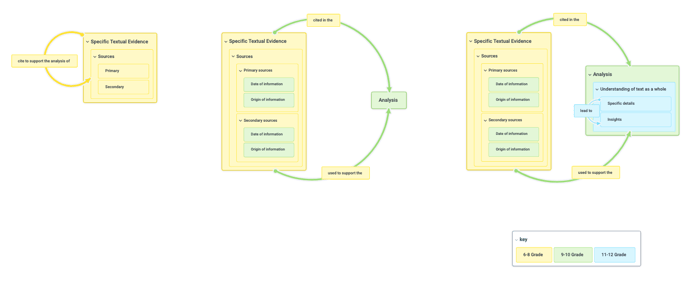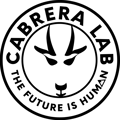Any time you want to compare and contrast mental models, we call that 'model matching,' and best practice involves DSRP mapping
The way to think of any situation where you want to compare and/or one mental model to another—which is essential to education, teaching and learning, but is also important for human communication, listening, and intrapersonal and interpersonal development—is that you are comparing/contrasting the structure and information of one map to that of another.
For example, here is a model matching exercise where we compare a 6-8th, 9-10th, and 11-12th grade standard. See an animation here or the map image below or explore the live map here).

In this image you can see three different mental models. You can also see (1) the DSRP structure and (2) the information content contained in those structures. Notice that the structure is changing from map to map (from grade to grade) as is the information content. The Information content builds and new information and structure is added. Yellow, for example is the 6-8th grade mental model, green is what is added in 9-10th grade, and blue is added in 11-12th grade. So, we can compare/contrast what is different/same between and across both quantitatively and qualitatively.
In this example, we are talking about a standard changing from grade to grade, but it makes no difference if the mental model matching that you are doing is:
- what your mental model is vs. what others think your mental model is
- what your student's or child's mental model is vs. what you want it to be (learning target)
- what someone is saying vs. what they are doing
- a current mental model vs. a future mental model
- any mental model vs. any other mental model
Model matching is a skill you must develop to exist successfully in the world. It is also the primary skill needed to be an truly great teacher, parent or coach.
